Emails – Letters – Tweets – Facebook – Instagram – Kit questions
Email us at inbox@skyatnightmagazine.com
MESSAGE OF THE MONTH
Drawn to comets
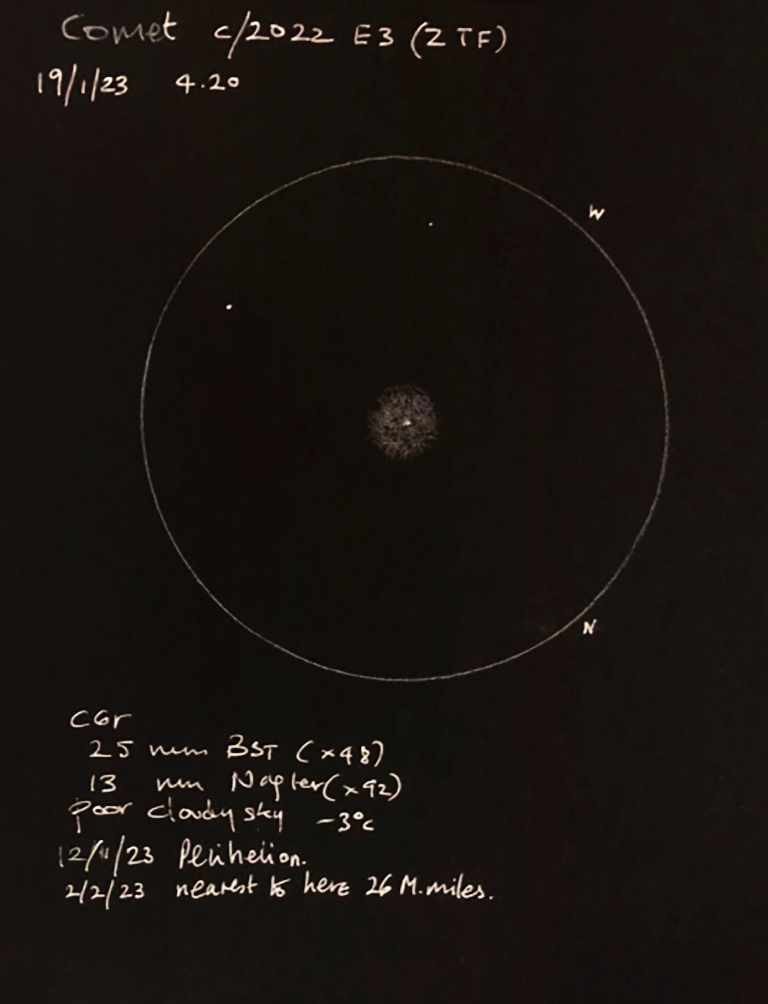
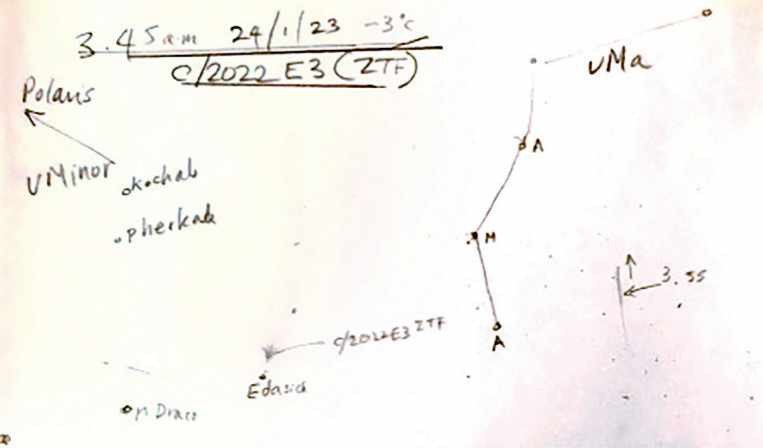
Comet C/2022 E3 ZTF has been a delight, watching it rise in the morning and evening sky. A comfy seat and some simple sketches gave a view of this memorable sight, clearly seen from town. There was hardly any difference in the views from my 6-inch achromat or 15×70 binoculars. The coma looked green and a wide tail was seen by averted vision and noting which area of the sky appeared misty.
What a great drawing, Nicholas. Well done on staying out so late in a very chilly –3˚C! – Ed.

The ‘Message of the Month’ writer will receive a bundle of two top titles courtesy of astronomy publisher Philip’s: Nigel Henbest’s Stargazing 2023 and Robin Scagell’s Guide to the Northern Constellations
Winner’s details will be passed on to Octopus Publishing to fulfil the prize
Pyramid party
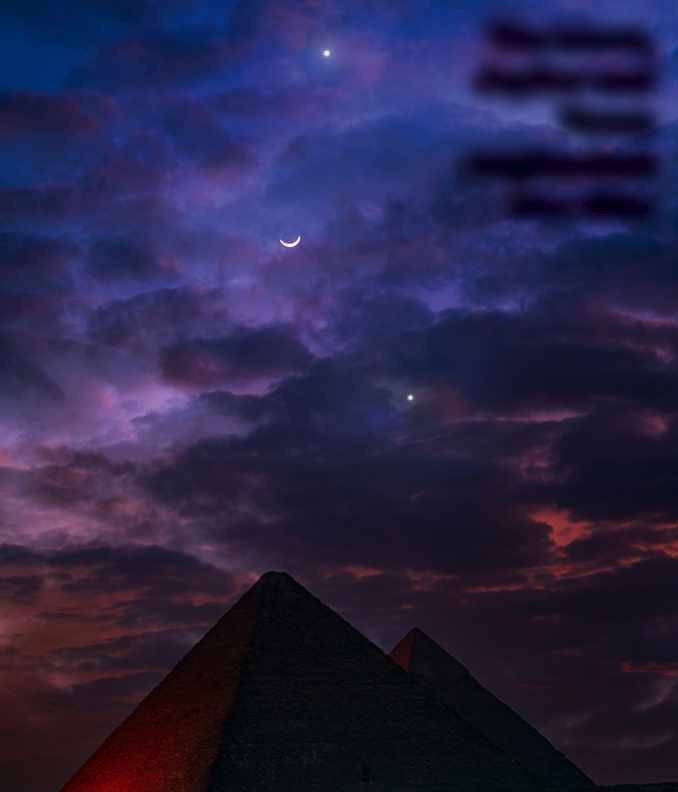
I would like to share this photo with you to publish in your honoured magazine: the crescent Moon, Jupiter and Venus above the Great Pyramid of Giza on 22 February. The gear it was taken with was a Sky- Watcher Star Adventurer tracking mount, modified Nikon Z6 mirrorless camera and Sigma 28–70mm lens, ISO 200 and a 1/30-second exposure at f/2.8.
Dark dealings
I read this morning that astrophysicists are claiming that dark energy comes from black holes. One problem that occurs to me is that black holes are found at the centres of galaxies and dark energy is manifesting itself by expanding space between galaxies, so effectively pushing galaxies apart. Yet there is no suggestion that galaxies themselves are expanding; instead seemingly, at least in part, they are held together by dark matter. This new theory appears to require dark energy to be in two places at once.
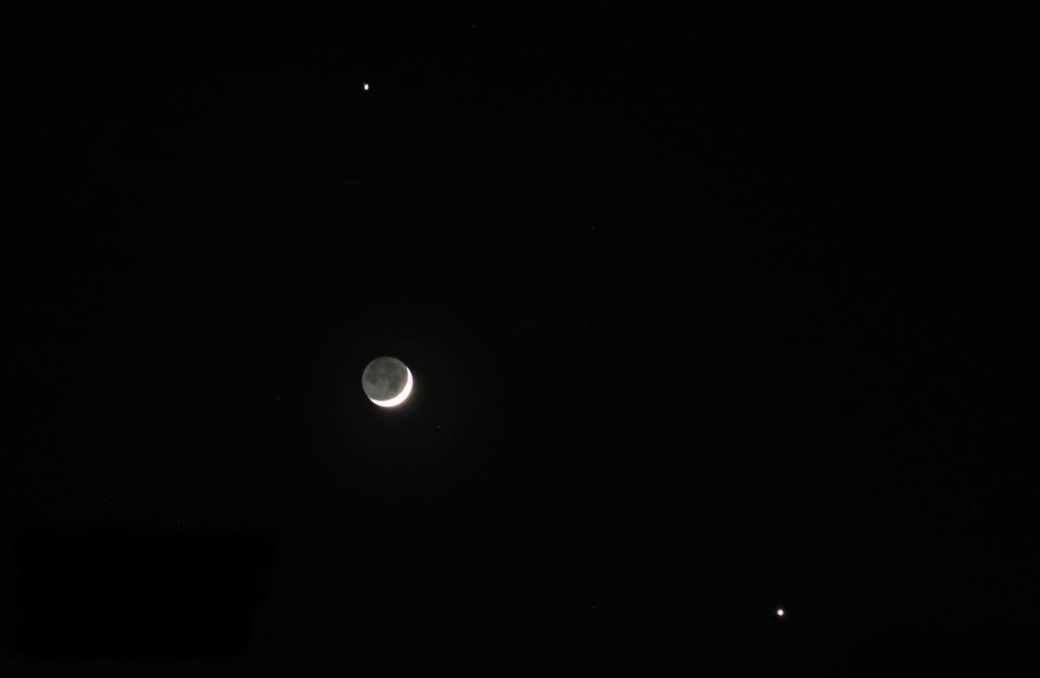
Fancy three
This is my effort (above) at capturing Jupiter, a crescent Moon and Venus on 22 February. The earthshine shows well, but the crescent is a little over-exposed. It was taken with a Canon EOS 6D DSLR camera and 24–105mm lens, ISO 1600 and a 1-second exposure at f/4.
Shuttle song
Following your article on the Columbia disaster (Explainer, February 2023), I thought that readers would be interested in a very poignant postscript to the event. Mission specialist Laurel Clark’s ancestors emigrated from Scotland to the US in the 1880s and she was always very proud of her heritage. In the 1990s, she was stationed with the US Navy submarine squadron at the Holy Loch on the Firth of Clyde. During this time she heard and fell in love with the music of Scottish band Runrig. Fast-forward to 2003, and, along with other crew members, she was allowed to take a CD on board the Shuttle. She chose a Runrig album to use the track ‘Running to the Light’ as her wake-up and exercise music. This was the last music the crew heard.
Among the wreckage, the searchers found a CD player with the Runrig CD still inside. On hearing of the disaster, Runrig percussionist Calum Macdonald said: “Laurel was a very special Runrig fan. She’d been featured in one of our newsletters just before the Columbia mission. She’d planned to photograph herself in space for the next issue. When we got news of the accident, we couldn’t believe it.”
Some time later, Laurel’s husband and son met with the band in Glasgow and presented them with the CD that had been recovered from the wreckage. Runrig subsequently dedicated the final track ‘Somewhere’ on their final album The Story to Laurel, whose voice can be heard as the track fades out.
Fighting talk
Douglas Vakoch’s appearance on TV and subsequently in Sky at Night Magazine in February (Inside The Sky at Night) sent a chill up my spine. I would love to see enlightened aliens gently greeting us and teaching us to treat each other more kindly, like in some Hollywood depictions, but we simply have no idea what any alien species may be like in reality. By sending messages designed to be received by unknown intelligences, isn’t Douglas risking the safety of humanity by potentially attracting the attention of more advanced and equally violent species as our own? I think sending messages out to unknown recipients is a risk to our safety, and I hope Douglas you are listening more than they are, for all our sakes.
CORRECTIONS
In ‘Chelyabinsk: 10 years on’ (February 2023 issue), we incorrectly stated that the asteroid’s mass was 130,000 tonnes; it was 13,000 tonnes.
ON FACEBOOK
As Comet C/2022 E3 ZTF left our skies, many of you got in touch to share your experiences.
Thomas Kempf I watched it with my family and it looked wonderful. In 50,000 years the world will be a complete other world; maybe those people will watch it from the outer planets or the Moon.
Neil Kondel I saw it only once last week when it was getting more faint through my binoculars. I was glad that I had a chance to see it.
Nicole Bedford It took a bit of research to find its exact location, but it was well worth it.
Aubrey Stout I’m so glad my 10-year-old nephew was able to see it. He is a science and history kid and seeing this made him so excited.
Ralph Hengst I said goodbye on Monday 13 February, when it nearly passed NGC 1647, the wonderful small open cluster. The comet was still nice through my telescope.
Corrina Turner Very lucky to see it using my binoculars. Once in a lifetime opportunity.
Jimmy Murley My grandsons and I will never forget seeing it.
Tweet
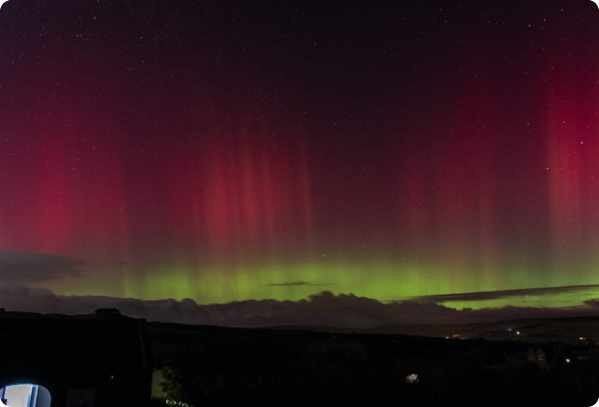
Andrew Morl @AndrewMorl • 26 February
Aurora tonight now as we speak from @GrassholmeObser. Best display I have ever seen. Image from the back of the camera. More to come @BBCNEandCumbria @skyatnightmag
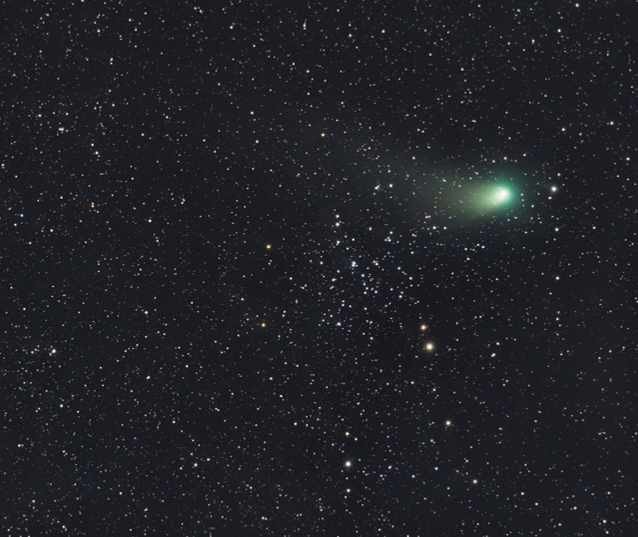
bemostar • 19 February
Comet C/2022 E3 ZTF in the constellation Taurus. The comet moved to the constellation Taurus and was close to NGC 1647 on 13 Feb and to the star Aldebaran on 14 Feb. Telescope: Askar ACL200 f/4 APO lens. Camera: ZWO ASI533MC Pro. Subs of 90 seconds. UV/IR cut filter @bbcskyatnightmag @zwoasi
SOCIETY IN FOCUS
Preston and District Astronomical Society (PADAS) is a friendly group of amateur astronomers, welcoming to everyone from complete beginners to seasoned observers and astro imagers. PADAS has a rich history dating back to the Preston Scientific Society, formed in 1876, and its active astronomical section.
We meet at 7:30pm on the second Thursday of the month at Deepdale Labour Club for our guest speaker nights. On the fourth Thursday of the month we hold our members’ night at the historic Jeremiah Horrocks Observatory. We have a good collection of telescopes for observing: a 16-inch truss tube Dobsonian, a 12-inch Meade SCT, plus medium to small telescopes and a solar telescope.
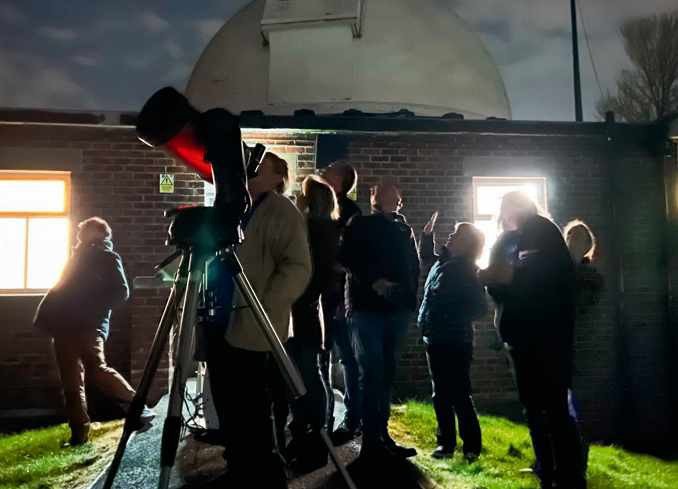
The society is very active with public outreach. On the third Thursday of each month, from October to March, we host public observing nights at the observatory, which houses the historic 8-inch Cooke refractor. The observatory was designed by George Gibbs and opened to coincide with the 29 June 1927 total eclipse. The dome is currently unserviceable, but will hopefully be repaired in the near future.
We have a good relationship with the Jeremiah Horrocks Institute at the University of Central Lancashire, hosting joint events and assisting with their public observing nights at Alston Observatory throughout October to March.
SCOPE DOCTOR
Our equipment specialist, Steve Richards, cures your optical ailments and technical maladies
Email your queries to scopedoctor@skyatnightmagazine.com
In the sub-zero weather this winter, my 8-inch Go-To Schmidt-Cassegrain telescope won’t move vertically to align on a star, though I can power it up and move it horizontally. Can you help?
As the temperature decreases, the viscosity of the lubrication in the gears and bearings of many mounts will start to increase, causing a greater load on the motor drive and even initiating a motor stall if it is cold enough. This could affect either or both axes. If you are using batteries to power your mount, the electrochemical reaction that produces the electric current will slow down with decreasing temperature, reducing the power of the battery, sometimes to below the minimum required for full operation of the mount.
Very low temperatures can cause the display on your hand controller to fade until it is unreadable. If you are very unfortunate and have a faulty solder joint or crack in one of the tracks on the mount’s printed circuit board (PCB), the contraction of the PCB and its components with decreased temperature can cause a disconnection in the circuit.
Keeping the mount warm using a chemical hand-warmer and placing external batteries in an insulated box with a hand warmer may well resolve the issue.
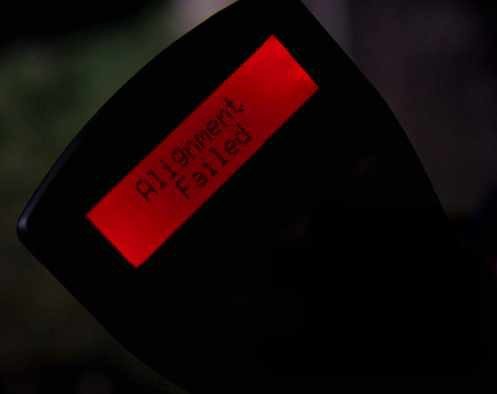
Steve’s top tip
What is backlash?
Astronomical mounts and focusers often rely on the action of gears to make them move. These have teeth that mesh with the teeth of another gear, the worm thread of a worm gear or the rack of a rack and pinion drive. Ideally, this meshing of the gears would be perfect with no gaps, but manufacturing tolerances and the need for lubrication mean that there is usually a small gap between the mating surfaces. This gap results in a small amount of play in the gears that is most obvious when changing the direction of travel, resulting in a slight delay in the movement. This is known as backlash.
Steve Richards is a keen astro imager and an astronomy equipment expert